
December 8, 2025 | Articles
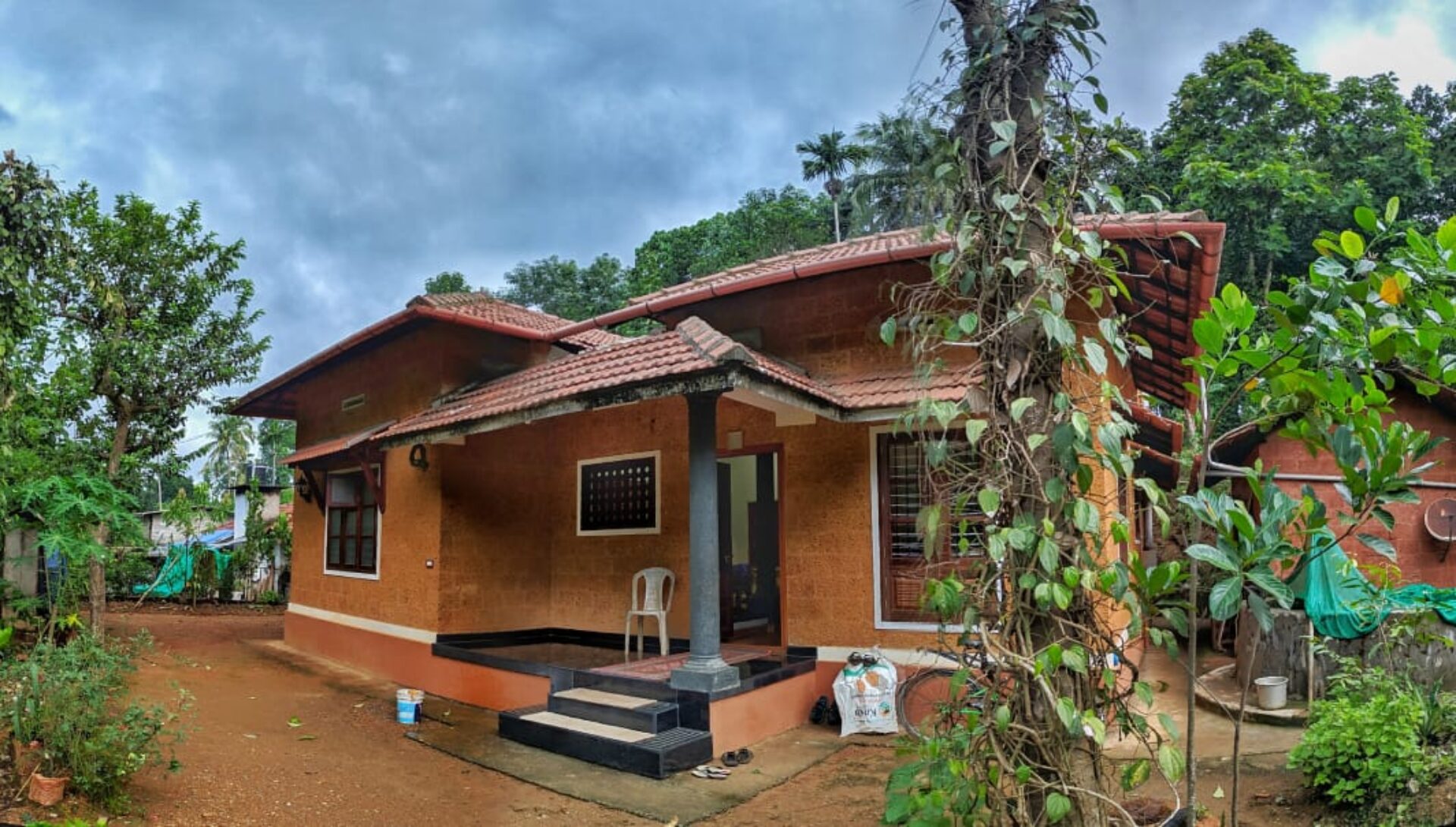
Many Hill International employees strive to live sustainably and promote sustainable practices in the office and on their project sites. However, Senior MEP Engineer Prasad Nellikkattil, LEED AP, in Hill’s Doha, Qatar, office demonstrated his commitment to sustainability and his appreciation of the natural world in a more tangible way: building a 1,500 SF home for his family using sustainable materials and principles in the Kannur District of Kerala, India.
A Childhood Dream
“This home was the realization of a childhood dream,” says Nellikkattil. “I was born in a remote mountain village in the Kannur District, surrounded by many different types of trees, most which were covered with black pepper creepers. It was a green paradise.”
Nellikkattil points out that, in the 1980s when he was growing up, the village had no electricity, no public water system, and no public fuel system. Villagers dug their own wells and shared with their neighbors. “We used dried wood for cooking and kerosene lamps for light. No one had any electrical devices, and we used very little plastic. We lived ‘off the grid’ throughout my childhood.”
Although Nellikkattil grew up without many of the amenities and services we take for granted, he enjoyed the outdoors and developed a strong knowledge of local flora and fauna. “I was interested in being with nature. I observed things closely – wild trees, cultivated plants, insects making their nests or warming their larvae, snakes, and other animals. As a toddler every village kid was taught what was poisonous and what was not, for example, and I learned about the herbal medicinal plants used in ‘Ayurveda from Elders,’ as my grandfather was a practitioner himself. We lived in nature, certainly.”
In school, Nellikkattil remembers being passionate about learning and how once, forced to recuperate at home with a fever in fourth grade, he read the only content he had available: a science textbook. “I finished reading the whole of it,” says Nellikkattil. “I remember the book explained how plants prevented soil erosion, for example, and I loved it so much that I still have it in my library today.” Nellikkattil says this one book helped to spark his lifelong interest in science, and how participating in a local science club exposed him to the principles and ideas of sustainability, such as rainwater harvesting to replenish ground water reserves. “Inspired by my club, I made a small pit to harvest rainwater,” says Nellikkattil. But my father saw it a week later and scolded me, saying the collection of water could make our ground water well collapse, and immediately covered it up.”
Undaunted, Nellikkattil continued to explore and invent. In fourth grade, for example, he made a miniature smokeless “chulha” wood stove, which the family appreciated. The chulha had a ventilation system that created draught and sucked all smoke out of the cooking area. This achievement, among others, would result in greater educational opportunities and more knowledge about the growing body evidence on the benefits of sustainability.
“I knew if I was going to build my own, full-fledged sustainable home, I had to learn more,” Nellikkattil says. “I began my research for making own home back in 2005. I developed architectural plans and elevations of a typical two-story building myself. But it turned out that I couldn’t build it—I was over budget and dropped the idea.
“But, in 2010, I resumed my research and started reading books on Kerala architecture, or ‘Vastu,’ as it is locally known. I began to understand what kinds of building materials suited our home, and in 2012, I decided to make a small but comfortable single-story building, which my wife agreed to.”
Nellikkattil adds that it was also in 2012 when he discovered The Hand-Sculpted House: A Philosophical and Practical Guide to Building a Cob Cottage, written by Ianto Evans, Linda Smiley, and Michael Smith. “Reading this book,” says Nellikkattil, “I understood that the Vastu books in Kerala were greatly misinterpreted, at best – there were no universal solutions or hard and fast rules to building construction. For example, one typical section in all Vastu books is about what trees are suitable for the four directions of a house. Vastu recommends planting leaves with small leaves to the North and non-deciduous trees to the South. But the ‘real’ explanation is that these types of plantings best utilize the light from the North and prevent heat falling on the southern walls, ultimately improving the quality of life inside the house. While the result is the same, the Vastu Gurus in Kerala related the positioning of the trees instead to energy and divinity.”
Nellikkattil adds The Hand-Sculpted House clarified the importance of siting the building before deciding what materials to use for construction, where windows should be placed etc. “Evans taught me a great deal.” This included importance of building for the specific environment and site, using the right materials, working with the local flora and fauna, and above all, says Nellikkattil, “limit disturbing mother nature!”
Dream House
By 2013, Nellikkattil was LEED AP accredited and had a detailed knowledge of sustainability and sustainable construction in-hand. He approached the Habitat Technology Group, who were building with locally available materials, about building his own sustainable home. The result is a true dream home: a 1,300 SF main house and 200 SF guest room full of sustainable features and built in harmony with the surrounding landscape. Specifics of the home include:
-Natural ventilation achieved through windows, ventilators, and a pergola in the roof above a central courtyard.
-Extensive use of daylight inside the house, reducing electricity use.
-LED power-saving light fittings throughout.
-Solar power providing uninterrupted power throughout the sunny season.
-A solar water heater providing hot water to all bathrooms and kitchen.
-A rainwater harvesting system that captures 90% of rain from the roof into two groundwater wells.
-Grey water recycling pits.
-Construction materials sourced within a 55 km radius (except for steel, cement, and sanitary hardware).
-Floors, outside of wet areas, built from locally sourced terracotta tiles.
-An improvised “smokeless chulha” that allows for cooking using locally available wood and wood waste from mills within 2 km.
-No thermal barriers and no insulation materials, as they are not needed in the local climate.
-Space around the house is not paved, allowing for increased percolation of water.
Nellikkattil says he enjoys many areas and aspects of the house, but that the internal courtyard, flooded with daylight, is his favorite. “In old Kerala homes, in fact throughout South India, a central courtyard inside a house was where agricultural societies did many household tasks. The courtyard is where families gathered, vegetables dried, and other farming-related jobs such as sorting and packing were done.
Nellikkattil adds that his courtyard is not entirely traditional. “Local courtyards were open to the sky and allowed in water during rains. I visited and talked with a homeowner who built a similar house with an open courtyard and learned that water damaged finishes in the monsoon season. I decided to make my courtyard smaller to avoid this. Habitat preferred to have a concrete pergola at the roof level of the courtyard for security reasons and suggested an acrylic cover on top to prevent water and allow in daylight. I took their suggestion but also installed the acrylic on a frame to allow vertical air movement within the courtyard.
However, the house is not perfect to Nellikkattil, at least technically. “My least favorite part of the house are the short roofs above the kitchen work area and the study room, where we installed a solar water heater and solar panel with great difficulty. A shadow over the coils results in less heat than we expected, and the solar panel had to be lifted up to avoid a clash with the roof structure and this disrupts the aesthetic of the house.”
That said, Nellikkattil is quick to add his family loves the house and even curious visitors arrive to see the home’s sustainable systems. “My whole family loves living here. We enjoy meals in natural light, never worry about power outages, and have hot water year-round with no electricity bill. Now and then I still have people who want to see how we installed these systems and how they perform.”
Perhaps most importantly, Nellikkattil says his home allows him to demonstrate the viability and the reality of living sustainably. “I don’t believe in preaching theory,” says Nellikkattil. “If I cannot demonstrate in my own life or with another real-world example that I have seen myself I can hardly ask someone else to consider a home like this.” Nellikkattil continues, “I believe in minimizing the use of anything and giving back to the society and universe. As the Bhagavad-Gita says, one who enjoys all by himself without giving back to the universe is doing a great sin. To me, commitment to sustainability is our duty.”
The Future of Sustainability in the A/E/C Industry
“Professionally, awareness of sustainability and its benefits is on an exponentially rising curve. People have started thinking about what is needed and what is not when they build. I am sure, in the years to come, sustainability will be a decisive factor in construction.”
In Qatar, where Nellikkattil supports Hill’s projects, he notes the increasing use of the local sustainability system—the Global Sustainability Assessment System, or GSAS—is evidence for his optimism. “The Qatari A/E/C industry knows the GSAS ratings and adapts many of these features even when not seeking certification for the project. Using district cooling systems, grey water recycling, draught resistant landscaping, energy efficient lighting and electrical fittings, certified air handling products, and using locally available materials are all commonplace on projects in Doha.”
Nellikkattil cites the CSAS rated Corniche Park Towers at Westbay Doha as one example he is particularly proud of. “As part of Hill’s Project Management Team, it was my responsibility to review supporting documentation prepared by the Lead Consultant and advise the client. We also facilitated Value Engineering for MEP, structural, and façade works, all of which optimized use of materials and reduced energy consumption.”
Within Hill, Nellikkattil sees several opportunities to reduce our footprint, including maintaining offices in a sustainable building (like Hill’s Philadelphia headquarters, which are located in a LEED certified high-rise), encouraging the use of public transportation, and continuing to reduce paper, electricity, and water use.
Nellikkattil also hopes Hill can help clients see the benefits of sustainability in their projects. “As a project management company, Hill can recommend many sustainable measures early in the design stage, even when not opting for a formally certified building. For example, I believe removing architectural features with no technical function saves substantial amounts of material and labor, which translates to lower costs for our clients. Also, targeting projects that re-use existing structures would show Hill’s commitment to sustainability in our business practices.”
Nellikkattil’s home is unique, but the principles it embodies are not, and can be replicated on any scale. Whether making everyday choices in our own lives or supporting our clients on their mega-projects around the world, Nellikkattil has set an example for Hill employees to follow.
Share

December 8, 2025 | Articles

December 4, 2025 | Articles
Hill International Helps Deliver National Museum in Abu Dhabi
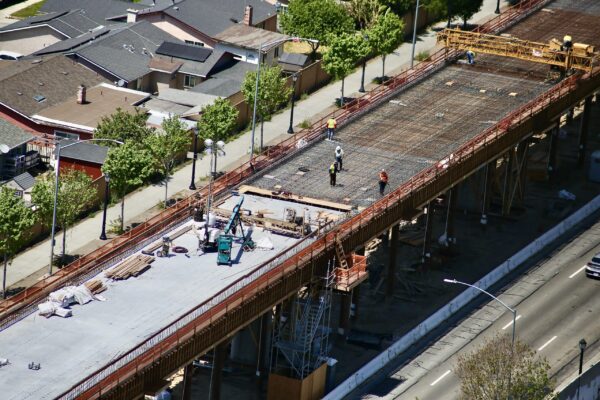
November 16, 2025 | Articles
Making Connections in San Jose: VTA’s Eastridge to BART Regional Connector

November 12, 2025 | Articles
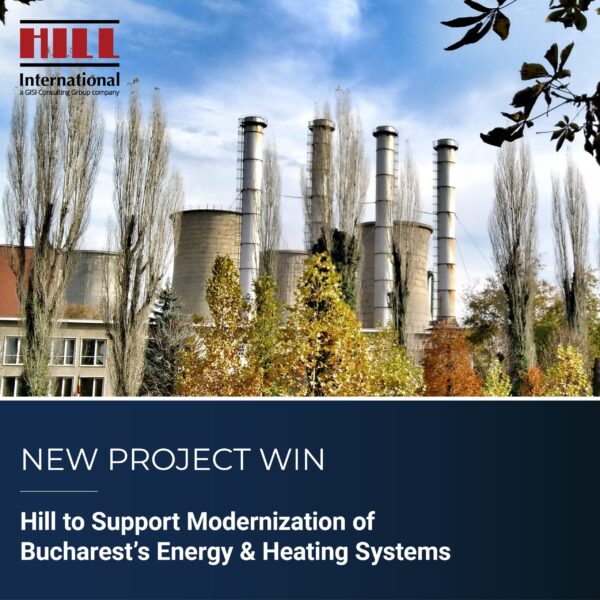
November 3, 2025 | Articles
Hill International to Support High-Efficiency Gas Cogeneration Projects in Bucharest
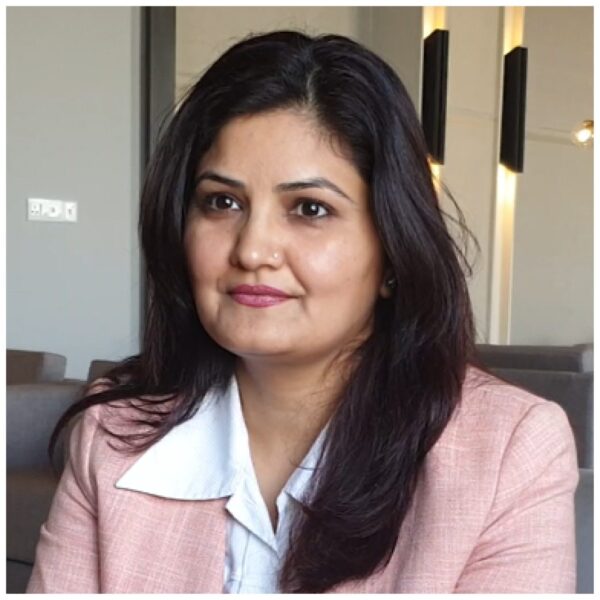
October 12, 2025 | Articles
An Interview With Pakistan Country Manager Syeda Fakhar-un-Nisa

October 5, 2025 | Articles
More Than a Park: The Latest Updates on PennDOT’s I-95 CAP Project in Philadelphia

September 28, 2025 | Articles
New Business Development Director Julie Petrich’s Relationship-First Approach
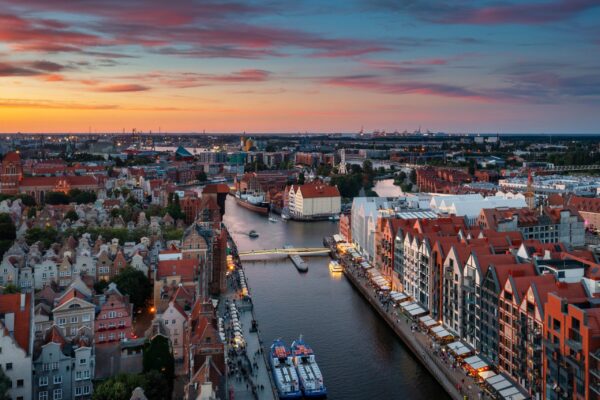
August 27, 2025 | Articles